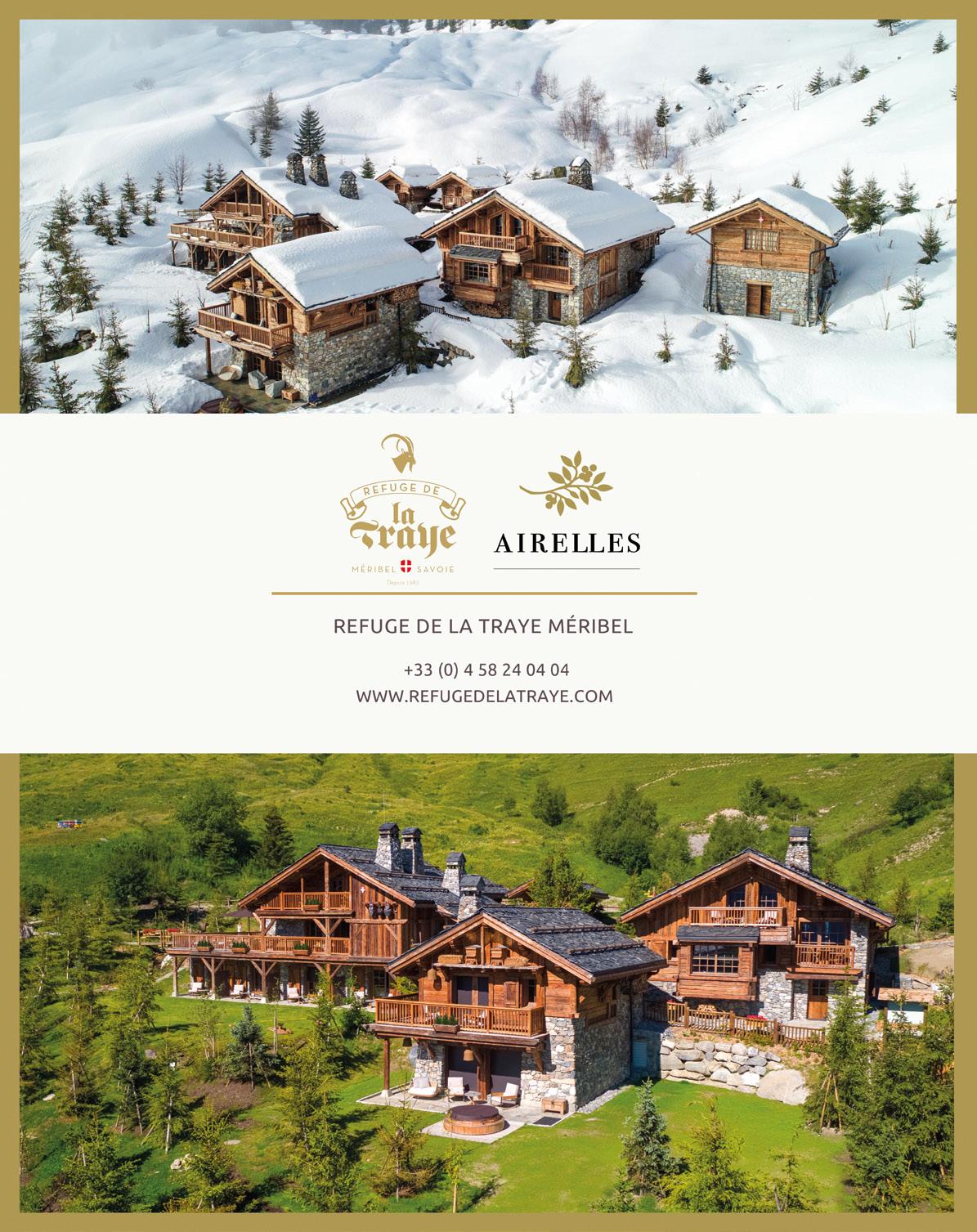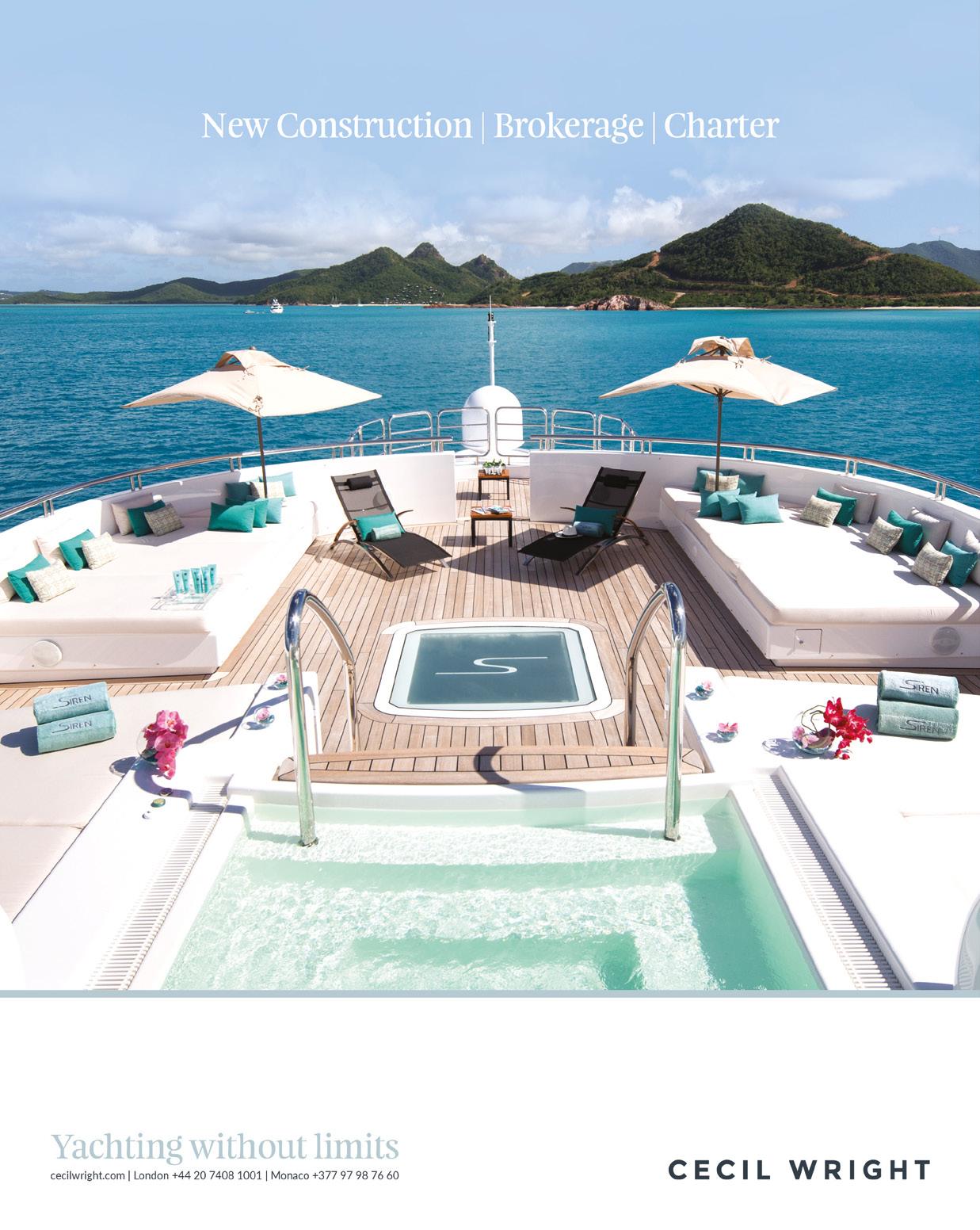
3 minute read
FEADSHIP UNIQ
Data and science are being used to build smarter by Netherlands-based superyacht giant Feadship.
JANE ARCHER REPORTS FROM ITS FIRST UNIQ EVENT
Advertisement
What is UnIQ?
Well, Feadship’s decision to discuss its research and development is pretty unique, but in this case it stands for Understanding Innovation and Quality, the platform by which the company is telling the world how it is designing and building better superyachts and, through that, improving life on board. Part one of UnIQ looked at learning through data collection and automation.
What kind of data?
Specifically technical information. Different parts of the vessel – the engine, the bridge, the air-conditioning units – feed back data on, for instance, temperature or speed. This data is logged every three seconds and stored in a central computer on the yacht that can be accessed from Feadship’s offices in the Netherlands.
Why?
Quite simply, it gives Feadship an efficient way of solving problems on board. Its technicians can assist the crew remotely, but if that doesn’t work, they will know what the issue is before sending people out from the Netherlands. Moving forward, the data will allow the company to predict, and therefore prevent, issues. By anticipating problems, spare parts can be shipped out and ready to install before anyone knows they are needed, says Pier Posthuma de Boer, Feadship’s refit and service director.
So, it’s all about problem-solving?
Not just that. Data collection will also help Feadship build better, in terms of yacht design, fuel consumption and environmental impact. The latter might not be at the front of most owners’ minds at the moment, but with climate change high on the political agenda, sustainability cannot be ignored. By using the data to understand how their yachts are used, say fuel consumption for the hotel function (air conditioning, for instance) and when sailing, Feadship can assess ways to reduce their carbon footprint. Ongoing research and development is using fibre-optic sensors to better understand the way a yacht’s superstructure flexes and how that impacts energy consumption. Feadship is also looking into the feasibility – and practicality – of hybrid yachts that operate on battery power and hydrogen, and how technology can be used to inform the crew when the yacht hull or propellers need cleaning, which again improves fuel consumption.
Doesn’t data collection raise security issues?
Good point, but Feadship says good crew training and carefully managed IT will protect data against cyber attacks and shield suppliers’ information from competitors.
It sounds a bit Big Brother
But remember the data collected relates only to technical stuff – how the ship is handling, temperature, movement, vibration and so on – not private information about the owner or guests. If owners do have concerns, they can switch off the data sharing. It’s their yacht; their control button.
Does this mass of data link to automation?
For sure. Feadship is looking at how data collection, satellites and technology already used in cars and iPhones could help yacht operation and open up design opportunities. As an example, as more satellites are launched, yachts can be online all the time, allowing crew to get accurate weather forecasts – not just temperature ,but wind and sea swell – enabling Feadship to stay connected to the yachts, not only to collect data but push back with any information diagnostics. Already a new system called Foresight uses the technical data from Feadship yachts to enable the captain to calculate the best course (fastest, most economical or most comfortable), and predict wave heights accurately, which makes tendering operations easier and safer. Moving forward, the company is looking at ways to use sensors to help when ‘parking’ a yacht and employ technology that ‘stitches’ camera images together to give a 360-degree view of a harbour when docking.
How does this affect Feadship designs?
“It means you can see without seeing,” says Tanno Weeda, Feadship’s head of design. He suggests the position of the bridge could be changed, giving the owner’s suite and guests’ accommodation better views forward. Maybe it could move towards the back of the yacht, or even inside the vessel.
Inside the yacht? Isn’t that a bit fanciful?
Probably. As are suggestions that one day yachts will sail themselves. But Feadship’s focus on technology could allow more tasks to be done by the ship, so the crew can focus on the owner and their guests. “It’s all about trying to make life easier on board,” sums up Marc Levadou, Feadship’s manager, knowledge and innovation. O













